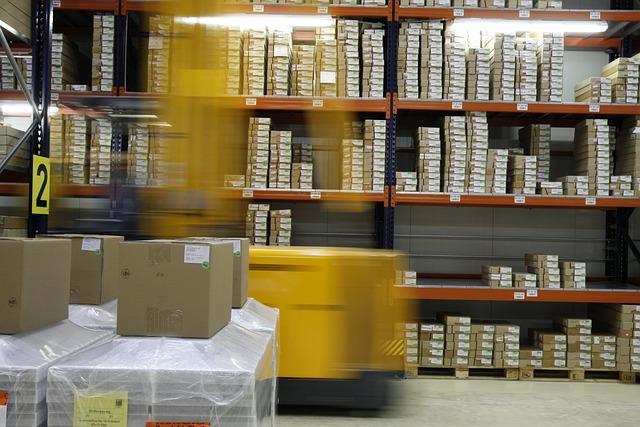Key Factors to Consider When Planning an Expansion of Your Warehouse
Expanding your warehouse is a strategic move that requires careful planning to ensure success. Whether you're scaling up due to increased demand or optimizing operations, key factors must be considered to navigate the complexities of warehouse expansion effectively. Here are crucial considerations to keep in mind as you plan the expansion of your warehouse.
Storage Systems
Selecting the right storage solutions can significantly impact efficiency and order fulfillment speed. Consider options such as pallet racking and automated storage solutions based on your inventory characteristics and handling requirements. Before investing in a mezzanine, carefully evaluate your current and future storage needs to determine if this elevated platform is the right solution for optimizing vertical space within your warehouse. Prioritize a layout that minimizes travel time for your staff and ensures easy accessibility to goods.
Technology Integration: Streamlining Operations
Integrating advanced technologies is essential for optimizing warehouse operations. Consider implementing warehouse management systems (WMS), automated storage and retrieval systems (AS/RS), and other technologies that enhance inventory visibility, order accuracy, and overall efficiency. Investing in technology now can lead to substantial long-term gains.
- Warehouse Management Systems (WMS): Implementing a robust WMS is crucial for optimizing inventory control, order fulfillment, and overall warehouse processes. A WMS provides real-time visibility into stock levels, improves order accuracy, and facilitates efficient warehouse management.
- Automated Storage and Retrieval Systems (AS/RS): Introduce automation through AS/RS to enhance storage density and retrieval speed. These systems reduce reliance on manual labor for tasks such as picking and replenishment, minimizing errors and increasing overall throughput.
- IoT Sensors and Connectivity: Embrace the Internet of Things (IoT) by incorporating sensors throughout the warehouse. These sensors can monitor factors like temperature, humidity, and equipment status, providing real-time data for proactive decision-making and preventive maintenance.
- Data Analytics for Decision-Making: Leverage data analytics tools to gain actionable insights into your warehouse operations. Analyzing data on order patterns, inventory turnover, and employee performance can inform strategic decisions, helping you optimize processes and allocate resources efficiently.
Scalability: Future-Proofing Your Investment
Scalability is not just about accommodating current growth - it's about future-proofing your investment. The business landscape is dynamic, and your warehouse expansion should be capable of adapting to changing market conditions. Consider the implementation of modular infrastructure and flexible storage solutions that can be easily reconfigured as your inventory and operational needs evolve. This forward-looking approach ensures that your warehouse expansion is not just a short-term fix but a strategic investment that can withstand the test of time.
Labor Force Planning: Training and Retention
As your warehouse expands, so will your need for a skilled and efficient workforce. Develop a comprehensive labor force plan that includes training programs and retention strategies. A well-trained and motivated team is crucial for maintaining productivity during and after the expansion.
- Comprehensive Training Programs: Develop training initiatives that address the specific skills required for the expanded warehouse operations. From equipment operation to safety protocols, a well-rounded training program enhances employee competence and confidence.
- Cross-Training Opportunities: Foster a versatile workforce by providing cross-training opportunities. This not only equips employees to handle various roles within the warehouse but also ensures operational flexibility during peak periods or unforeseen circumstances.
- Employee Engagement Strategies: Implement strategies to boost employee morale and engagement. Recognize and reward exemplary performance, create a positive work environment, and encourage open communication. Engaged employees are more likely to stay with the company and contribute to its success.
- Retention Incentives: Develop retention incentives to retain top talent. This could include competitive compensation packages, career advancement opportunities, and employee wellness programs. Investing in your employees' well-being and professional growth fosters loyalty and reduces turnover.
Supply Chain Integration: Seamless Connectivity
To achieve optimal warehouse expansion, it's essential to prioritize seamless connectivity within your supply chain. Assess the current state of your supply chain and identify opportunities for integration and collaboration with suppliers and distributors. Implementing real-time data exchange and communication systems helps create a synchronized flow of information. This not only enhances visibility into inventory levels but also facilitates quicker response times to fluctuations in demand.
Regulatory Compliance: Navigating Legalities
Understanding and complying with local regulations and building codes is paramount when expanding your warehouse. Ensure that your expansion plans adhere to zoning laws, safety standards, and environmental regulations. This proactive approach will prevent potential delays and legal complications.
Expanding your warehouse is a significant undertaking that requires a well-thought-out strategy. By carefully considering space utilization, integrating technology, planning for scalability, managing your labor force, ensuring supply chain integration, and navigating regulatory compliance, you'll set the foundation for a successful warehouse expansion. Keep these key factors in mind, and you'll be well-equipped to meet the demands of a growing business while maintaining operational excellence.

